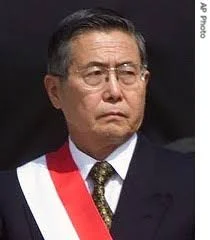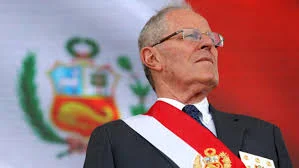Peru's Recent History: A Story of Struggles and Growth
Peru’s Recent History: From Terrorism To Triumph
Peru continues to go through a tremendous transformation that has taken the country from terrorism to triumph within the last almost forty years. Although Peru has struggled with political corruption and scandals within recent memory, on the whole, it has emerged as an economic powerhouse in South America. Along with economic growth, Peru’s expanding middle class has improved life for its people while transportation and services can vary depending on where you are in big cities like Lima.
Through EdOdyssey, we want to show you that despite Peru’s history of terrorism and most recent stint of political controversy, there has been an advance in development that has helped neighborhoods grow and prosper. From the bustling city center into the more humble neighborhoods, you will learn about how the atmosphere in Peru, and especially in Lima, has evolved and changed drastically during the last three decades.
Late 20th Century Terrorism, Recent Corruption
In the 1980’s and 1990’s, a reign of terrorism controlled and disrupted Peru. The Shining Path, a terrorist movement for the last two decades of the 20th century, rallied indigenous people from the countryside and poorer areas to engage in terrorist acts against civilians and the government. During that twenty year span, the armed supporters of the Shining Path took part in bombings and assassinations that went from more remote areas to major cities, such as Lima. Some estimates have shown that there were more than 60,000 deaths reported as a result of the Shining Path, according to the NY Times, which one of the highest death tolls from any terrorist group in the history of the America’s.
Former President Alberto Fujimori Credit: University of Houston - Clear Lake
In the 1990’s, President Alberto Fujimori pushed back against the group through unilateral, illegal orders ranging from kidnappings to assassinations of Shining Path members. Additionally, he used public money to fight the insurgency of the group that did contribute to weakening the power of the terrorist group, but his unethical tactics broke the law. His controversial decisions during his presidency ultimately put him in jail where he continues to serve a prison sentence that was given in the early 2000’s.
President Pedro Pablo Kuczynski during his short-lived presidency.
Credit: perureports.com
Despite Fujimori’s daring politics, his presidency began a time of construction and transformation in Peru that also highlights Peru’s continued struggle with political corruption within recent years. The most recent example comes from the controversy of one of the most recent presidents, Pedro Pablo Kuczynski, which brought him to resign as president in May 2018 - less than twenty months into his presidency.
His company advised and received funds from a Brazilian construction company, Odebrecht, that laundered money to electoral campaigns. Despite Peru’s political controversy surrounding their presidents, the country has seen significant growth in the middle class.
21st Century: Lima On The Rise
Lima has seen an increase in public transport that has helped the middle class grow tremendously within the last few years. According to Andina, a Peruvian news source, the middle class has grown eight percent from 2011 to 2015. In order to support this growing class, Lima continues to build out new transportation, including a new metro line.
This second subway line shows the Peruvian capital’s dedication to public infrastructure as it has invested heavily with over five million dollars to expand on its existing transportation. From one subway line to two subway lines, the country has committed its biggest investments in the country’s history, according to the World Bank.
This new metro line that aims to open in 2022 will serve over two million people, according to PeruReports, which shows that the country’s capital continues to grow and expand. The growth of the metro and bus lines in the city center will help continue to serve the community as Peru continues to gain economic strength in South America.
Don’t you want to get a look into the future of one of South America’s fastest developing cities before it’s finished? Do you want to see a real look some different neighborhoods?
The silver buses service the city center.
Credit: metropoliano.com.pe
Along the same lines, the buses in Lima show that even the bus lines indicate both an area of growth as well as identifiers of class and wealth. The Metropolitano, Lima’s public bus system (as seen on the right), provides quick and easy access for over half a million workers daily to get to/from work in more of central and generally wealthier parts of the city.
The yellow buses cover Northern & Southern Lima.
Credit: APLN
During your trip, you will get a chance to see the central area of Lima that the Metropolitano services as well as the more developing areas where the Alimentadora makes stops. In the past, we’ve taken student groups to a local orphanage in Villa El Salvador, one of the Lima’s developing neighbors, to complete a day of service out of solidarity. As a part of our custom programs, we have allowed our student groups to go out and serve local communities to see how people live in different parts of the city.
Do you want to witness the growth of some of the newest, most up-and-coming infrastructure in both North and South America? Are you curious to learn more about Peru as it continues to rise?
If you want to get a better idea about us and our programs, check us out across all of our social media!
Sources:
Andina, Agencia. “Peru's Middle-Class Accounts for One-Third of the Population.” News ANDINA - Peru News Agency, andina.pe/ingles/noticia-perus-middleclass-accounts-for-onethird-of-the-population-618120.aspx
Britannica, The Editors of Encyclopaedia. “Alberto Fujimori.” Encyclopedia Britannica, Encyclopedia Britannica, Inc., 24 July 2018, www.britannica.com/biography/Alberto-Fujimori.
“Delays for Lima Metro Line 2 Postpone Opening Date to 2022.” Perú Reports, Perú Reports, 20 Sept. 2017, perureports.com/lima-metro-line-2-delays-postpone-opening-date/5498/.
Forero, Juan. “Peru Report Says 69,000 Died in 20 Years of Rebel War.” The New York Times, The New York Times, 29 Aug. 2003, www.nytimes.com/2003/08/29/world/peru-report-says-69000-died-in-20-years-of-rebel-war.html
Hollar, Sherman. “Pedro Pablo Kuczynski.” Encyclopedia Britannica, Encyclopedia Britannica, Inc., 29 Sept. 2018, www.britannica.com/biography/Pedro-Pablo-Kuczynski.
“Lima Urban Transport: On the Way to Transformation.” The World Bank, The World Bank, www.worldbank.org/en/topic/transport/brief/connections-note-22.




